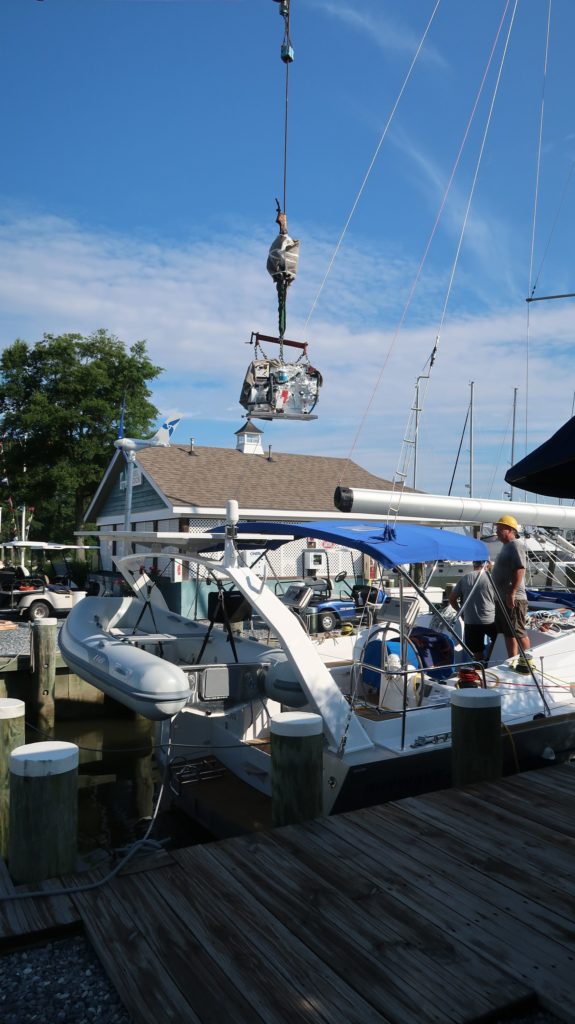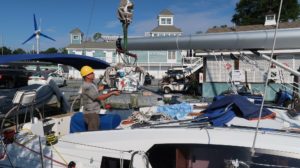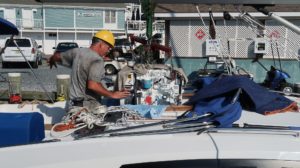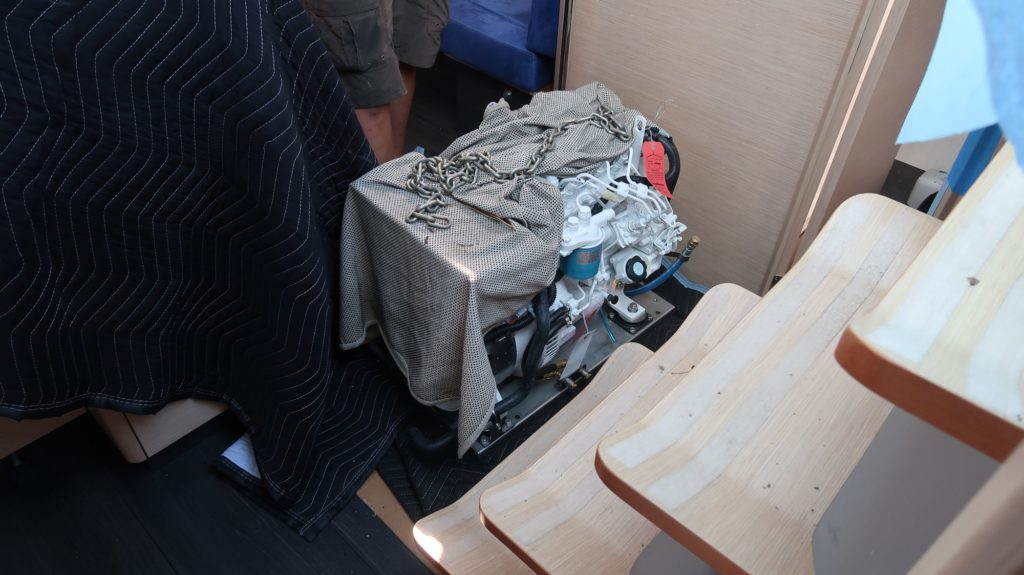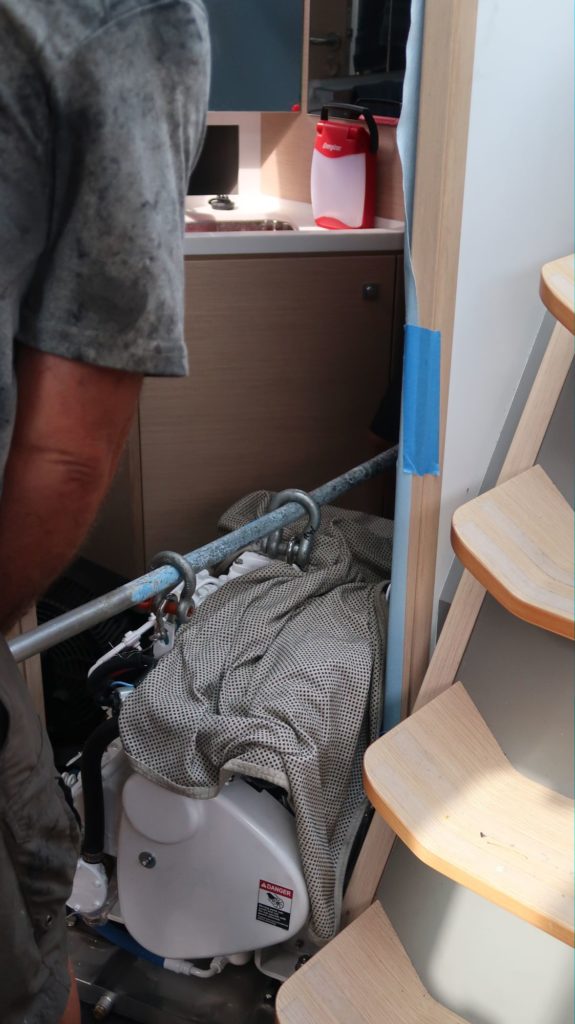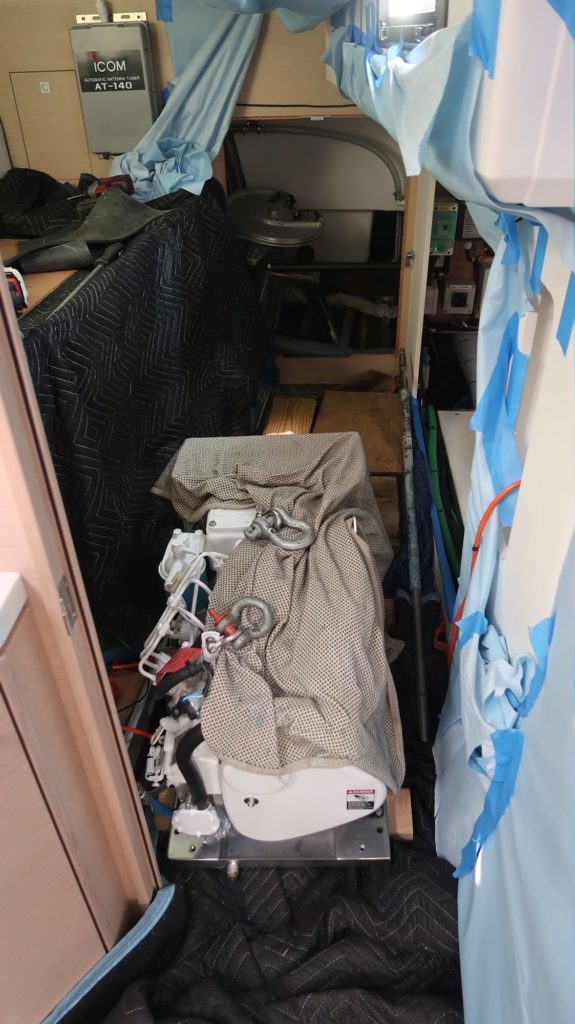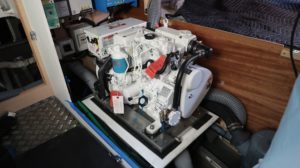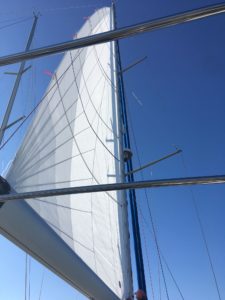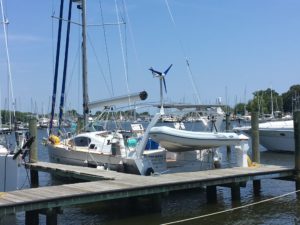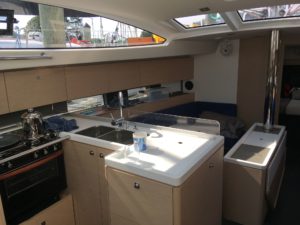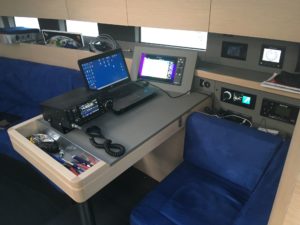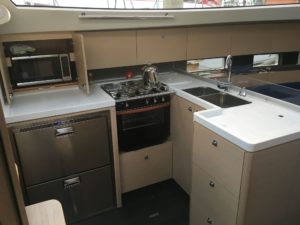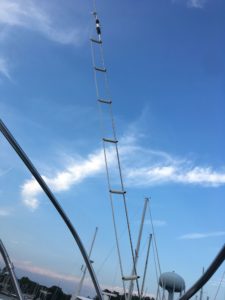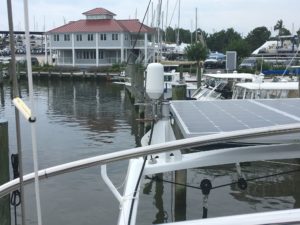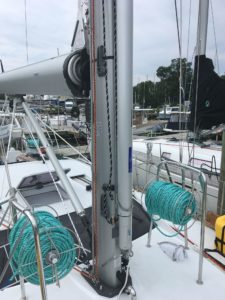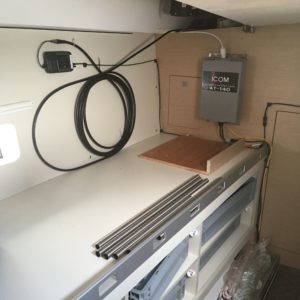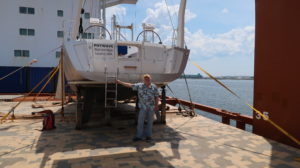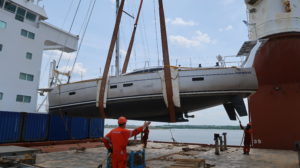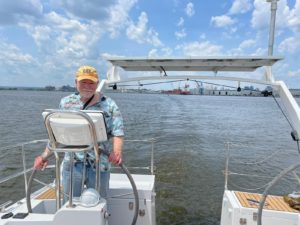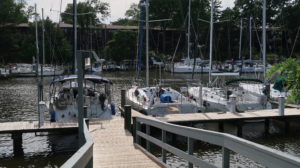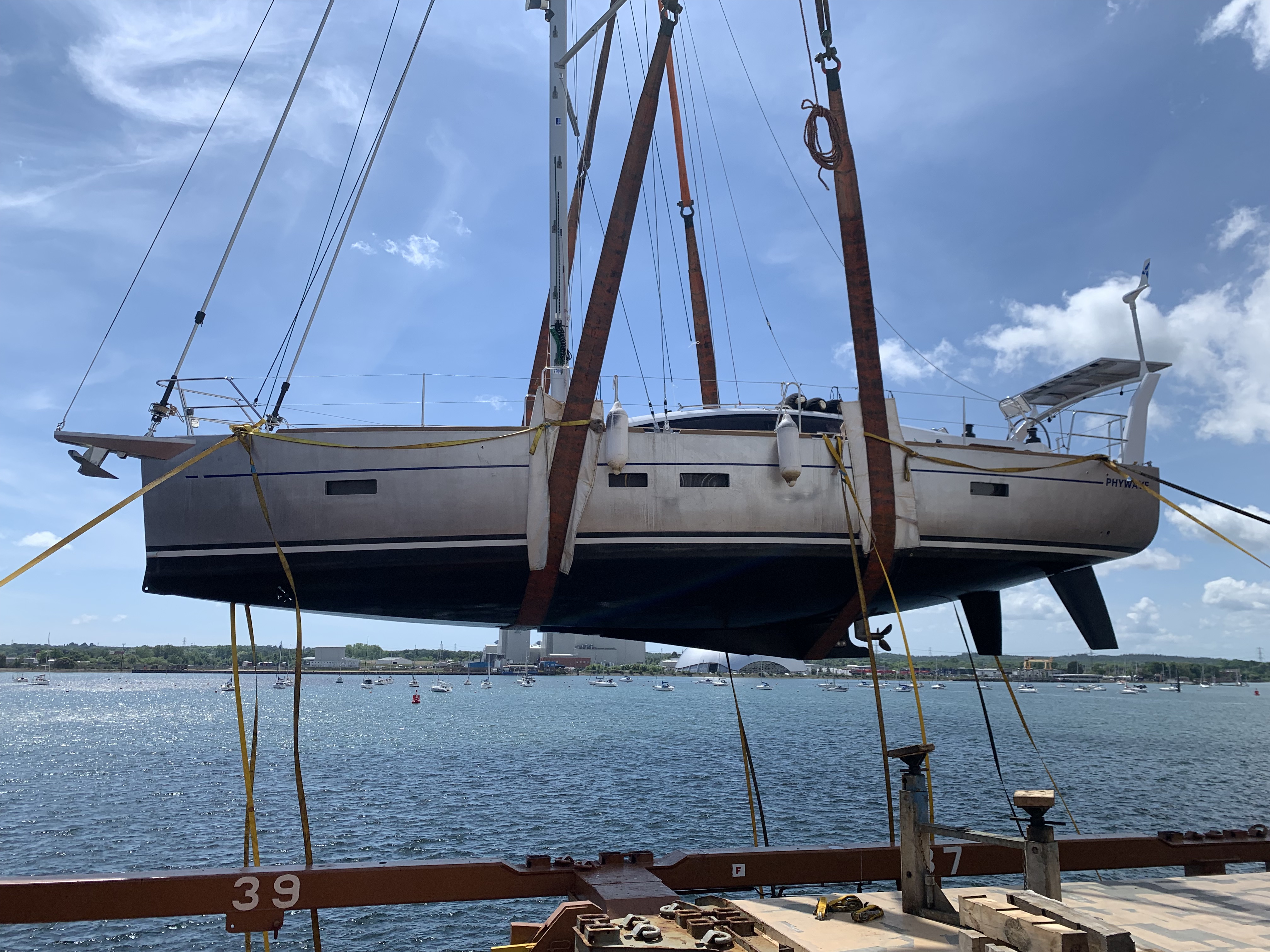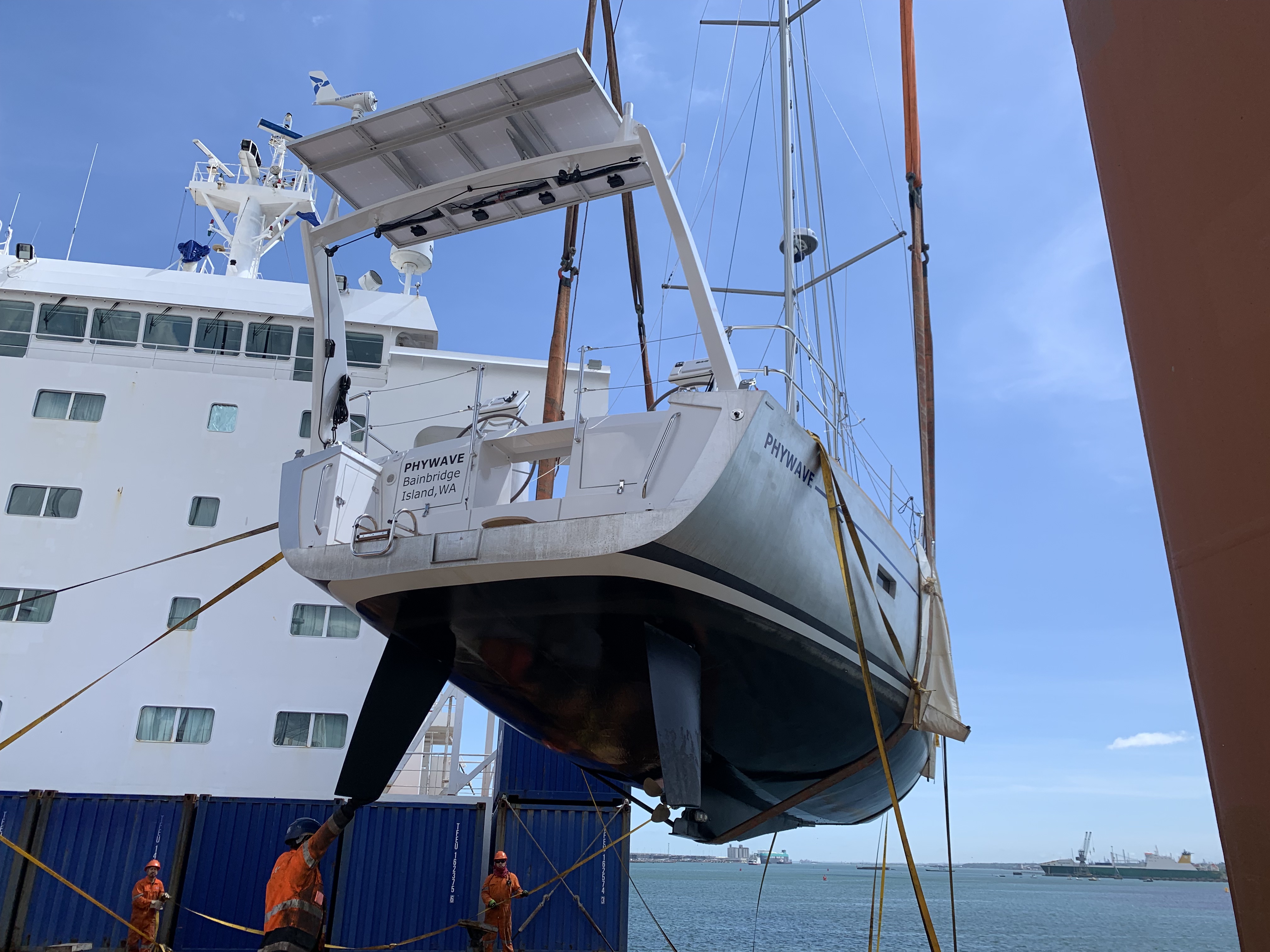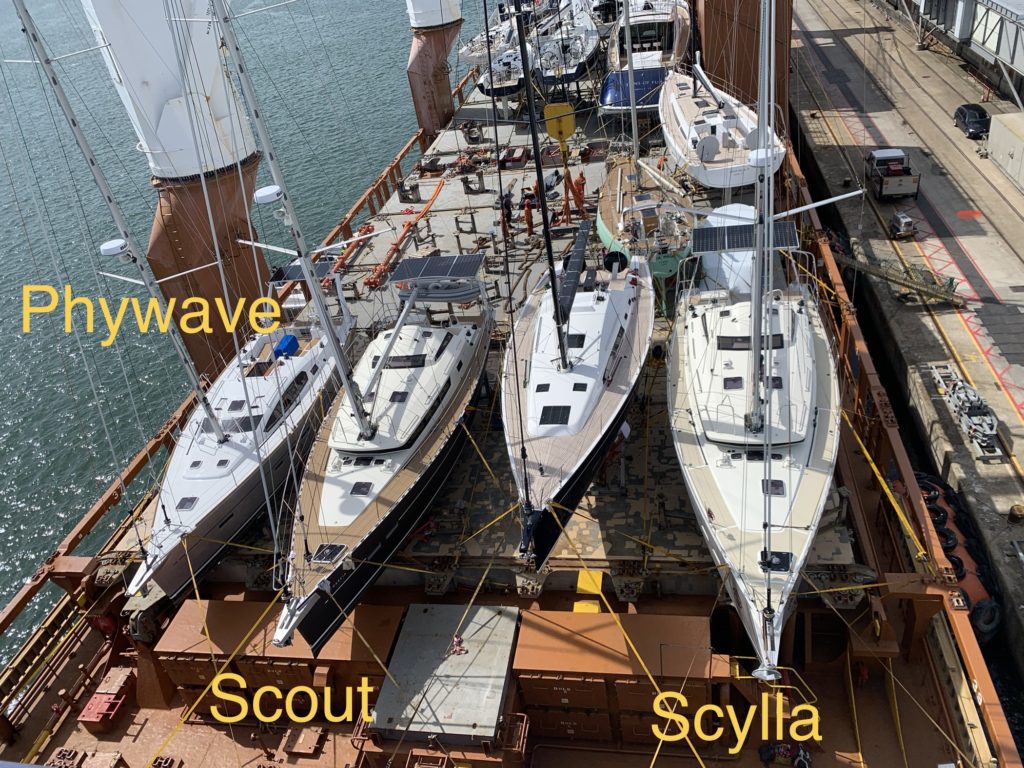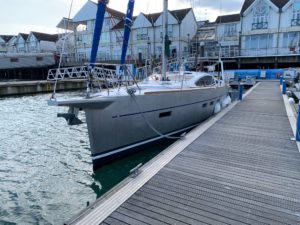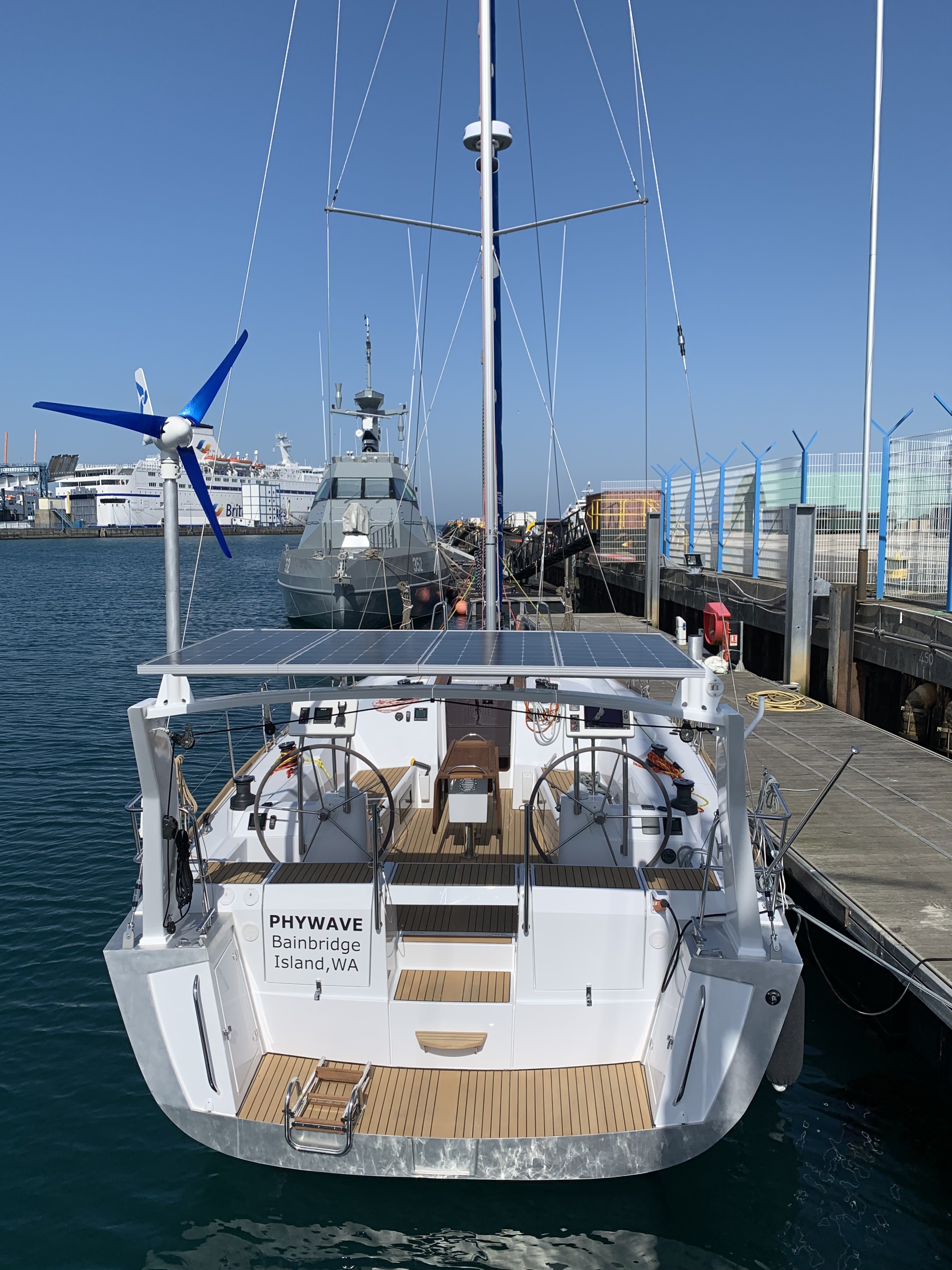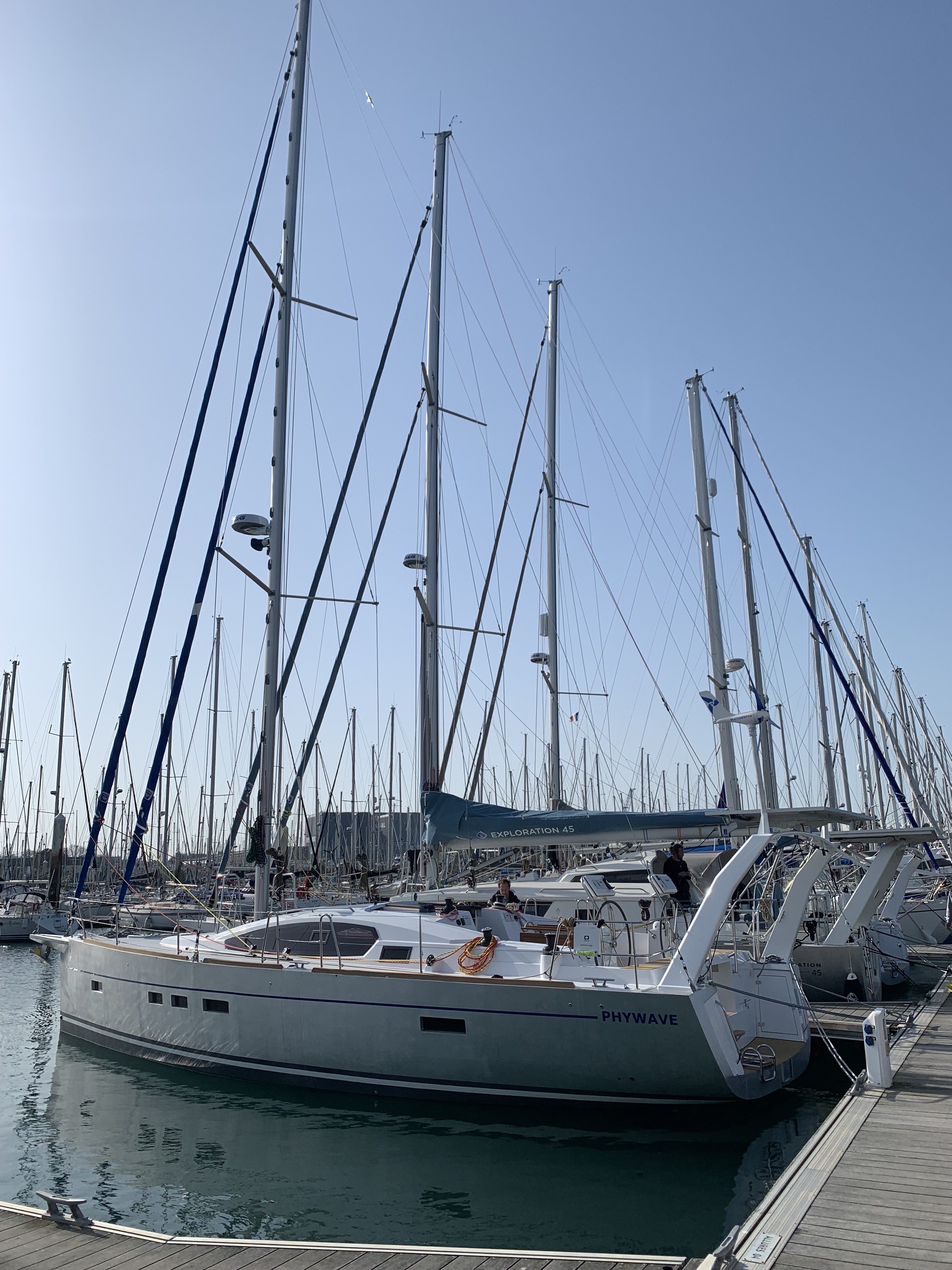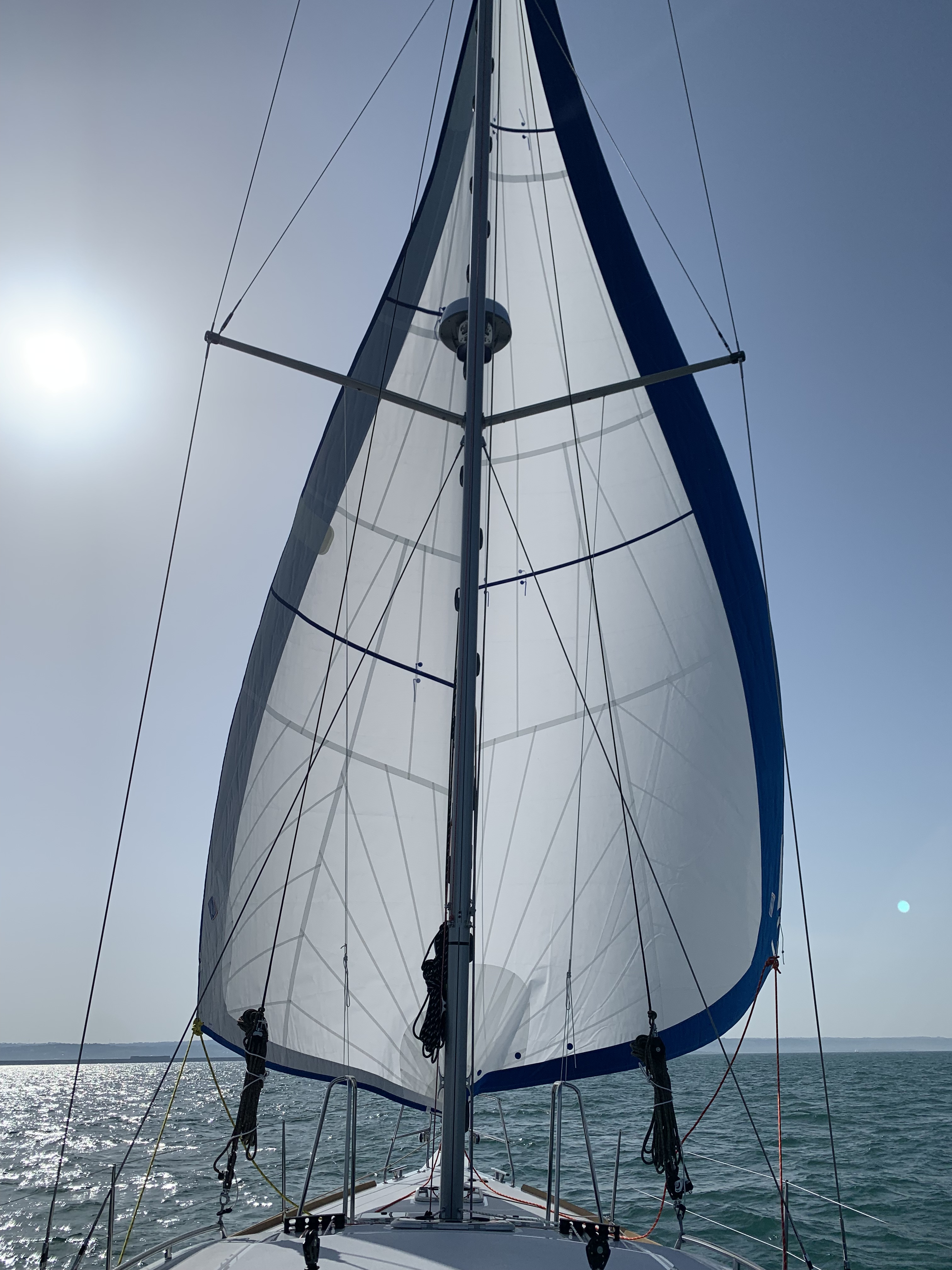1300Z, August 17, 2022
The days since my last post have been busy sailing with varying wind directions and speeds requiring frequent adjustments to the sails. I sometimes would have to start the engine to keep moving when the wind was light or coming a direction that was not useful for sailing along a course reasonably constructive toward reaching my destination. Many times the wind would be just on the cusp of being useful for sailing so running the engine as well (motorsailing) would result in reasonable progress.
For weather forecasting I’m employing the most commonly-used and well-regarded weather and routing models. I download updates twice a day on the low bandwidth Iridium GO satellite link which can take up to an hour depending on how much data I ask for. The most useful part of the downloaded data are colored forecast maps sent as compressed data files (GRIB files) showing forecast wind speeds and directions for several days. I’ve actually been surprised how far off the forecast can sometimes be but I’ve been in a fairly unsettled area of weather so I would expect it to be more difficult to forecast. Fortunately, I haven’t been hit with any storms, just a half dozen or so rain squalls where the wind speed can increase violently and the rain fall intensely but that usually last only 5-10 minutes.
I crossed the halfway point on this passage a few days ago. There is a tradition (or I just made it up) to offer a dram of whiskey to Neptune at the halfway point for continued good fortune on the passage. For such occasions I brought along a bottle of Battle Point Whiskey from Bainbridge Organic Distillery, made just a few miles from my house on Bainbridge Island. For those who have tried it, it’s one of the smoothest whiskeys you’ll ever taste.
As of this morning I am now less than 600 nm from Horta, counting down the miles. The forecasts say I’ll be crossing a high pressure dead zone with no usable wind for 36 hours starting tonight. More motoring. I’ll see if that forecast pans out. I’m currently projecting my arrival in Horta on August 22-23, depending on how much dead zone I have to deal with.
